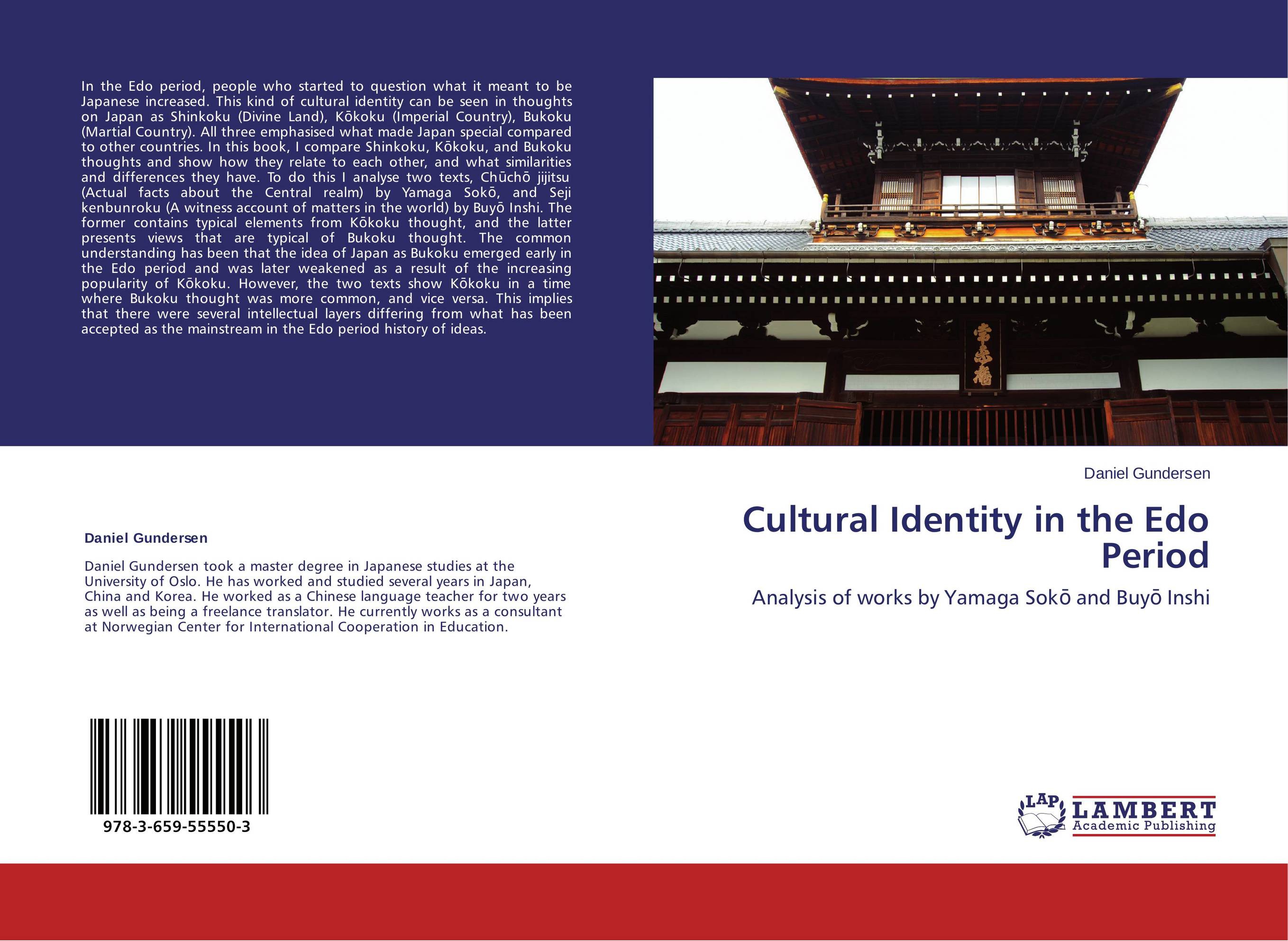| Поиск по каталогу |
|
(строгое соответствие)
|
- Профессиональная
- Научно-популярная
- Художественная
- Публицистика
- Детская
- Искусство
- Хобби, семья, дом
- Спорт
- Путеводители
- Блокноты, тетради, открытки
Cultural Identity in the Edo Period. Analysis of works by Yamaga Sok? and Buy? Inshi

В наличии
| Местонахождение: Алматы | Состояние экземпляра: новый |

Бумажная
версия
версия
Автор: Daniel Gundersen
ISBN: 9783659555503
Год издания: 2014
Формат книги: 60×90/16 (145×215 мм)
Количество страниц: 76
Издательство: LAP LAMBERT Academic Publishing
Цена: 16033 тг
Положить в корзину
| Способы доставки в город Алматы * комплектация (срок до отгрузки) не более 2 рабочих дней |
| Самовывоз из города Алматы (пункты самовывоза партнёра CDEK) |
| Курьерская доставка CDEK из города Москва |
| Доставка Почтой России из города Москва |
Аннотация: In the Edo period, people who started to question what it meant to be Japanese increased. This kind of cultural identity can be seen in thoughts on Japan as Shinkoku (Divine Land), K?koku (Imperial Country), Bukoku (Martial Country). All three emphasised what made Japan special compared to other countries. In this book, I compare Shinkoku, K?koku, and Bukoku thoughts and show how they relate to each other, and what similarities and differences they have. To do this I analyse two texts, Ch?ch? jijitsu (Actual facts about the Central realm) by Yamaga Sok?, and Seji kenbunroku (A witness account of matters in the world) by Buy? Inshi. The former contains typical elements from K?koku thought, and the latter presents views that are typical of Bukoku thought. The common understanding has been that the idea of Japan as Bukoku emerged early in the Edo period and was later weakened as a result of the increasing popularity of K?koku. However, the two texts show K?koku in a time where Bukoku thought was more common, and vice versa. This implies that there were several intellectual layers differing from what has been accepted as the mainstream in the Edo period history of ideas.
Ключевые слова: Cultural Identity, Edo Period, Shinkoku, Bukoku, K?koku, Tent?, Yamaga Sok?, Ch?ch? jijitsu, Buy? Inshi, Seji kenbunroku, kokugaku, budo, Japanese history of ideas, budo



